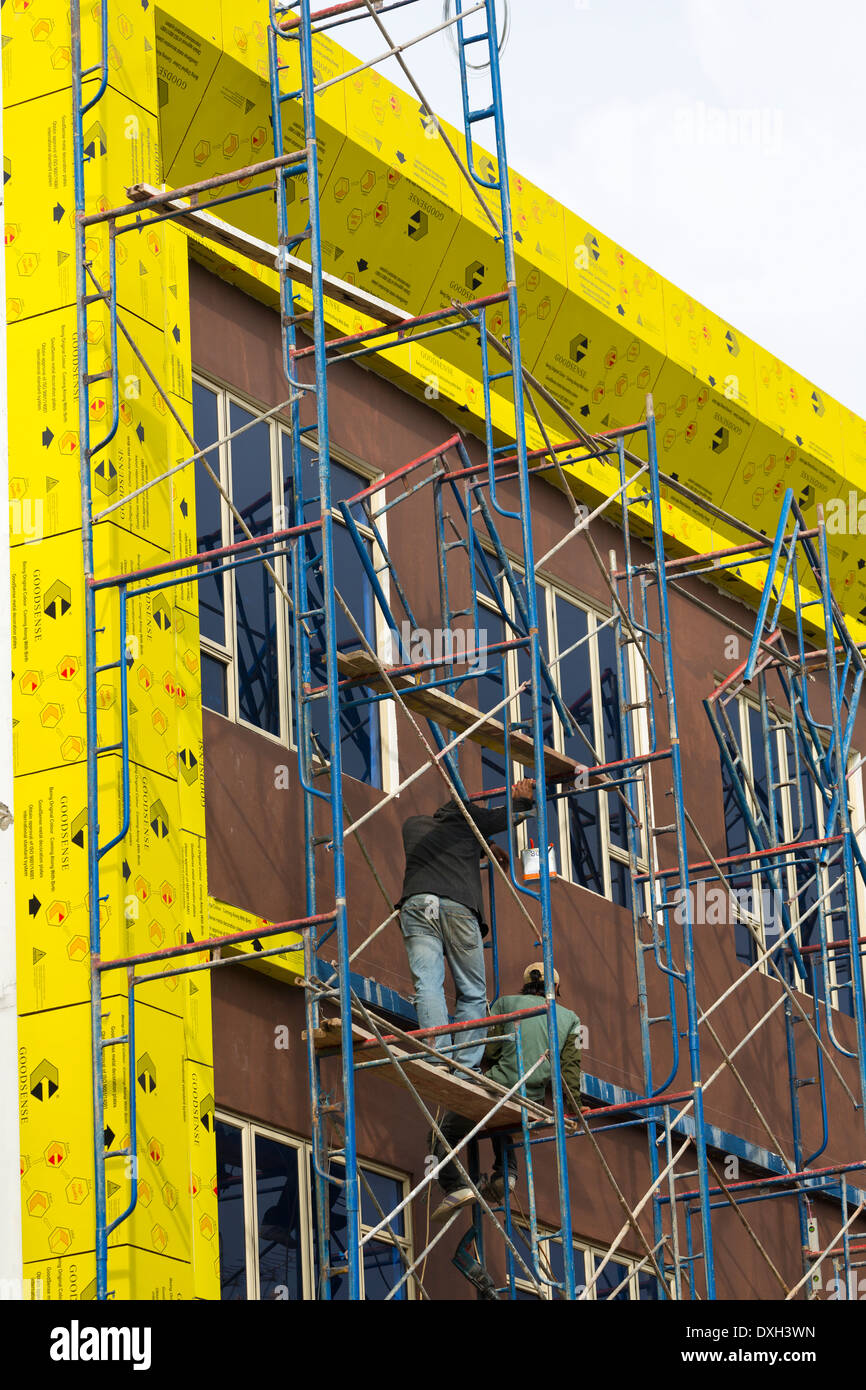From Ground Up: How Scaffold Builders Ensure Safety in the Construction Industry
In the busy world of infrastructure, security and effectiveness are essential. Scaffolding contractors play a key role in ensuring that construction sites work efficiently and safely. These professionals not only provide the necessary framework to raise workers and supplies but also bring a abundance of experience in safety measures, managing projects, and innovative scaffolding techniques. As construction endeavors grow more complex, the necessity for skilled scaffolding contractors becomes increasingly important.
Regardless of whether embarking on a small residential remodeling or a large-scale commercial endeavor, grasping the scope of what a scaffolding contractor does is crucial for clients and project managers alike. This guide will explore the responsibilities of scaffolding contractors, the significance of safety in scaffolding construction, and the myriad reasons to hire qualified professionals. With a comprehensive overview of different scaffolding variations and their functions, readers will gain insights into finding the right contractors, ensuring conformity, and fostering a safe working environment on construction sites.
Grasping Scaffolding Providers
Scaffold providers play a critical role in the construction sector, providing transient structures that assist work at heights. They are responsible for the design, installation, and dismantling of scaffold structures, ensuring that these structures meet safety standards and protocols. By specializing in this area, they help construction teams access high work surfaces safely and effectively, making them an indispensable ally in any building job.

The tasks of scaffolding contractors extends beyond just construction; it involves careful planning and coordination with project managers, builders, and engineers. They assess the particular needs of a project and select the appropriate type of scaffold suited for the task at hand. Scaffolding In Tonbridge includes understanding the load requirements, the altitude involved, and the surroundings where the scaffold will be used. Their expertise ensures that the scaffold is not only functional but also safe for all employees involved.
With security as a primary concern, scaffolding providers implement rigorous inspection protocols and follow best practices to minimize hazards. They ensure that all components and tools used are in accordance with regulations, further lowering the chance for accidents on site. By keeping a emphasis on security and efficiency, scaffolding contractors significantly add to the overall effectiveness and productivity of building projects.
Safety and Adherence in Scaffold Systems
Security is paramount in the building industry, and scaffolding plays a vital role in ensuring that workers can carry out their duties without risk to avoidable dangers. Contractors who specialize in scaffolding are trained to adhere to stringent safety standards and regulations, which involve regular inspections, adequate construction, and care of scaffolding structures. By implementing safety protocols, these contractors help avoid mishaps and injuries on-site, guaranteeing that all personnel can operate in a safe environment.
Adherence with safety rules is not only necessary for the safety of laborers but also for the effective execution of construction projects. Companies specializing in scaffolding must keep informed of local regulations and industry standards, which could include Occupational Safety and Health Administration regulations in the U.S. or comparable regulatory systems in countries worldwide. This dedication to adherence ensures that scaffold structures are designed and set up correctly, diminishing the likelihood of collapse and preserving the quality of the construction effort.
Furthermore, scaffolding contractors employ a systematic strategy to training their staff on safety practices. This training often includes correct application of safety gear, secure climbing techniques, and crisis response plans. By fostering a environment of safety and regularly engaging in reinforcement training, contractors in the field enhance overall project site safety and ensure that compliance measures are efficiently integrated into routine workflows, ultimately leading to a more protected job site.
Choosing the Appropriate Scaffold Solutions
Choosing an correct scaffolding option is vital for the success of any construction project. It starts by recognizing specific requirements of the project, such as height requirements, weight loads, and kind of work being performed. Various kinds of scaffolding, such as frame scaffolds, suspended scaffolds, or modular systems, address different requirements, so it's important to evaluate these factors carefully. Engaging a professional scaffolding contractor can offer valuable insights regarding which option will optimize safety and efficiency.
After deciding on the scaffolding has been determined, the next step is to review compliance with regulations and safety guidelines. Licensed scaffolding contractors are knowledgeable about local legal obligations in the area and can guarantee that the chosen option adheres to safety protocols. This not just protects employees but also helps avoid potential fines or delays due to non-compliance. It's crucial to choose solutions that have a proven safety track record, as this directly affects the overall safety of the worksite.
Lastly, logistical considerations are crucial in the choice of scaffolding. Factors including the accessibility of a site, location of utilities, and the anticipated timeline for the project can influence the scaffolding setup. Skilled scaffolding contractors can effectively handle these logistics and offer a tailored approach that aligns with your timeline. By taking into account these aspects, you can ensure that you decide wisely that supports safety, efficiency, and successful project execution.